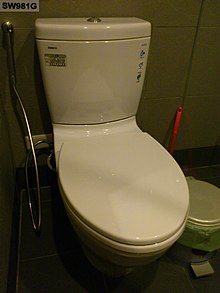
Understanding this concept helps guide strategic decisions on resource allocation, including labor, equipment and capital. To calculate the marginal product of labor, first, we will need to find out the change in labor and the change in production level. In economics, the concept of “Marginal Product of Labor (MPL)” refers to the change in output that occurs when there is a change in labor while all other inputs remain constant. It is a metric used in economics to identify how much additional output is generated with changing labor forces. Constant marginal product occurs when an increase in output equals an increase in input. When the marginal return is positive and increases, total output grows at a higher percentage of the input increase.
Not long ago, the company’s management conducted a survey to understand the impact of hiring additional employees on the output level of the company. In particular, production increases the scale of returns even though each input’s marginal product decreases as more inputs are used. Zero marginal product occurs when adding an input does not result in an increase in output. However, the percentage increase in output is lower than the percentage increase in input. Decreasing marginal product occurs when the marginal product is positive, but at a decreasing rate of growth.

The hiring of more personnel, for instance, can result in an increase in volume output to meet strong demand in the market. The concept of “Marginal Product of Labor” indicates the change in the production level of a business as a result of a change in the workforce. Based on that, companies decide whether hiring extra employees will result in a boost in productivity or if adding extra labor is not worth the cost. While the marginal product of labor focuses on the change in production resulting from the change in labor, the average product of labor shows the average output per employee based on a specific level of labor. Graphically, average product and marginal product of labor intersect where average product of labor is at its peak.
What is the Marginal Product Formula?
It shows you that the extra unit of input produces a higher output than the previous input. It occurs because the company derives significant benefits from teamwork or task specialization. Usually, the productivity of input increases with an increase in the average product. To calculate the average product, the total product value of the variable input must be known. Once the total product value is obtained, and it is divided by the number of inputs invested, the average product value can be obtained. The term “Marginal Product of Labor” reflects how adding one unit of labor such as hiring one more employee in a company changes the output of the company.
Conversely, the financial metric provides a relationship between inputs of production and outputs. Let’s take a look at some examples of a product-based and service-based companies and see how to calculate MPL in those instances. In service industries, marginal product is ascertained by measuring the number of services provided at any given day. Such services could include the number of cars washed in a car wash or individual lessons offered. Finally, the concepts of production would remain central to economic theories because they address one of the main concerns of the economy – Production. The return to scale is different from the marginal product, and no direct relationship between the two.
- Graphically, average product and marginal product of labor intersect where average product of labor is at its peak.
- An increasing marginal product is when the marginal product’s value is positive and increases when it adds input.
- Keep in mind, MPL (Marginal Product of Labor) is not always proportional to the output directly produced by the added employees.
- The concepts of total product, average product, and marginal product are helpful in determining the optimum productivity from a production process.
- Let’s take a look at some examples of a product-based and service-based companies and see how to calculate MPL in those instances.
- Once the total product value is obtained, and it is divided by the number of inputs invested, the average product value can be obtained.
After reaching the zero marginal product, adding input will only decrease total output. From the table, when the company adds one worker and becomes 11 people, the total output actually decreases by 5 units, from 195 units to 190 units. Inefficiency and disorganization are the two causes of this reduction in output. An increasing marginal product is when the marginal product’s value is positive and increases when it adds input.
Why is the marginal product concept important in economics?
Marginal product of labor is defined as the change in the level of output when a new employee is hired, given that all else remains constant. Hiring an additional person is a large cost, and businesses should be sure that the additional unit of labor will result in significant productivity increases. Let’s imagine that you are the factory manager for a company that builds cars.
However, once it reaches this point, increasing input will only decrease total output. If you focus on the labor input, the denominator in the above formula is the number of workers. Marginal product is the ratio of change between an input (usually labor or capital) and an output (usually units produced). The Manual Product of Labor (MPL) is equal to the change in total output divided by the change in the number of employees.
How to Calculate Marginal Product of Labor?
Similarly, marginal product is calculated by measuring the amount of wealth amassed. When the value of the total product reaches its maximum value, the marginal product value becomes zero. The return scale describes how the output changes as all the inputs change. However, the marginal return tells you how output changes when one input changes, assuming the other input is constant. A marginal product is a measure of the ratio of input to the output of a product. This input and output could be quantities, monetary, or other metrics.
Marginal product is important for measuring company productivity and production efficiency. For example, a company can use it to decide whether employees’ addition will increase their revenue? In their calculations, they might replace total output with total revenue as the numerator. To calculate the marginal product, divide the change in output by the change in input. Enter the total change in output and the total change in input into the calculator.
- And if you are interested in learning this concept, then you are in the right place.
- Understanding the marginal product of labor (MPL) is essential for optimizing the labor force and its business productivity.
- However, with a gradual increase of the same input, when all other inputs are kept constant, the output per unit goes on decreasing.
- If there is no demand in the market and the company continues to make cars, it is likely to plunge into negative marginal product.
- Consider a farmer who purchases additional land to as a way of farming on a much bigger piece of land.
This can reduce the wastage of resources and can let producers use the optimum amount of raw materials. So, in this example, we can see that the marginal product of labor of the new employees is 3,200 units per labor. And this has resulted in an increase in the productivity level from 2,000 units per labor in the fiscal year 2019 to 2,400 units per labor in the fiscal year 2020. It helps companies and businesses decide whether hiring additional employees will benefit the business/company or adding extra manpower is not worth the cost. Keep in mind, MPL (Marginal Product of Labor) is not always proportional to the output directly produced by the added employees. In this article, we will explain how to calculate marginal product but before that, lets define marginal product.
In the table above, this point is reached when the company has 10 workers, and the total output is 195 units. The following equation is used to calculate the marginal product of a produced good. First, you must calculate the total output made by any given amount of employees. The average product is defined as the output per unit of the variable factor.
Relation of Marginal Product with Total Product
As a result, the marginal productivity will ultimately decrease after a certain level. This means even if companies hire an additional workforce at this point, their total production will decrease with it. Understanding the marginal product of labor (MPL) is essential for optimizing the labor force and its business productivity.
Marginal Cost Meaning, Formula, and Examples – Investopedia
Marginal Cost Meaning, Formula, and Examples.
Posted: Sun, 04 Jun 2023 07:00:00 GMT [source]
In such cases, it is advisable to stop increasing that variable input. Marginal product of labor is the change in output when additional labor is added, such as when an additional employee is hired. It is important to point out that all other factors remain constant. In other words, with marginal product of labor, only the amount of labor changes, not any other factor involved in production.
Marginal Product Formula
In other words, marginal product is the change in output when one unit of input of one variable is added keeping the other variables constant. In simpler words, it shows how many additional output products will be produced for the addition of one unit of input, like labor, materials, or overhead. In economics, the term “marginal product” refers to the increase in production output due to an increase in the variable input by a unit. In other words, the marginal product measures the productivity of the additional unit of the variable input. The marginal output of labor ascertains the additional output that comes about with the hiring of more people to oversee the production process. The metric is synonymous with established firms where labor costs fluctuate depending on the production level.
In some cases, an increase in input might result in a decrease in total output. If that was to happen, then a business is said to have plunged into negative marginal productivity. A car company can only continue to produce more cars if there is strong demand in the market. If there is no demand in the market and the company continues to make cars, it is likely to plunge into negative marginal product. The formula for calculating the marginal product of labor (MPL) can be derived by dividing the change in production output by the change in input labor.
Uses and Relevance of Marginal Product.
If the 2 new employees are unable to meet their quota, then you will need to reassess your change in labor, which will change your MPL. However, it is important to note that an increase in input does not always result in an increase in output. As businesses grow, there reaches a point where an addition of a unit of production results in slower rates of production. The marginal how to calculate marginal product product of raw material is the additional output that comes into being on the addition of raw materials used in the production process. Consider a farmer who purchases additional land to as a way of farming on a much bigger piece of land. The marginal product of capital tracks how changes in capital, which is one of the main factors of production, affect the overall output.

Meanwhile, if the denominator is the change in capital, we call it the marginal product of capital. Wikipedia – Marginal Product – A quick entry on marginal product and how it is calculated. An output increases by 700 in the same period as an input increases by 1,000. StockMaster is here to help you understand investing and personal finance, so you can learn how to invest, start a business, and make money online.
Essentially, it captures the change in output resulting from a unit change in labor. However, productivity will decrease with each additional input until actually resulting in negative productivity returns. Having the knowledge of the total product, average product and marginal product helps economists understand the positive sides and nuances of production processes. This ultimately results in an overall increase in production without having to compromise productivity.
